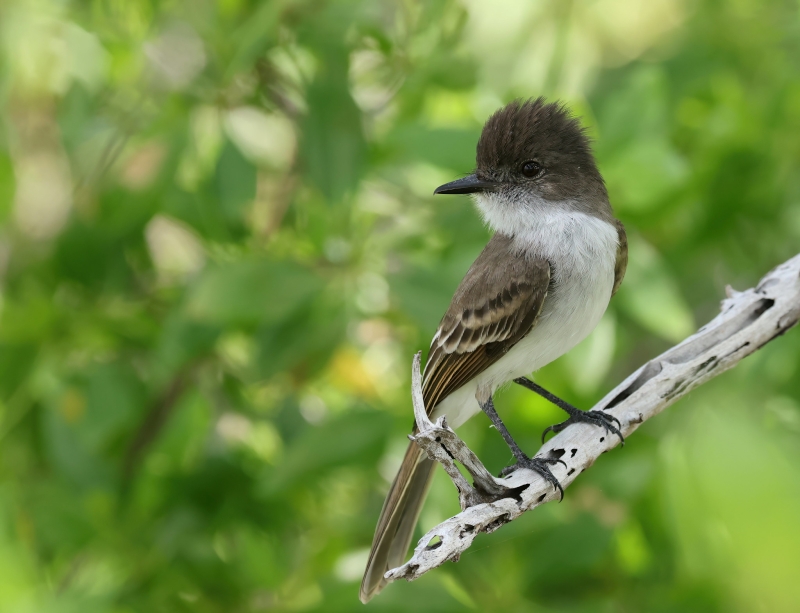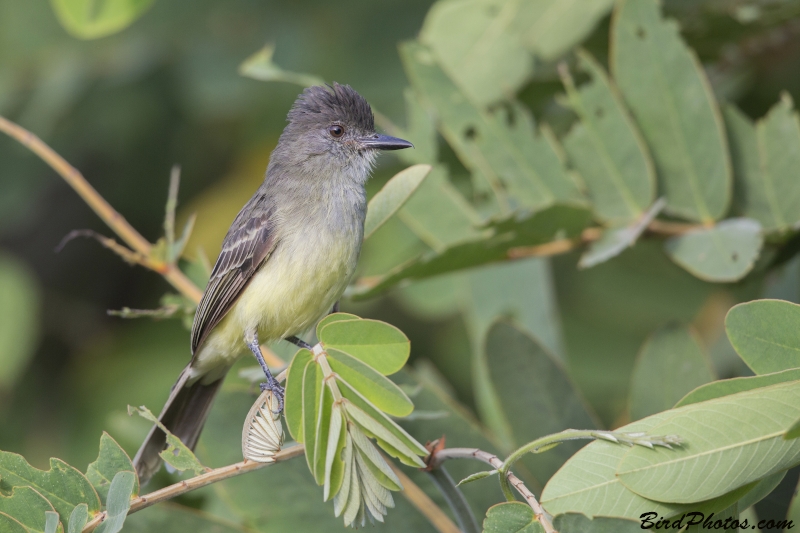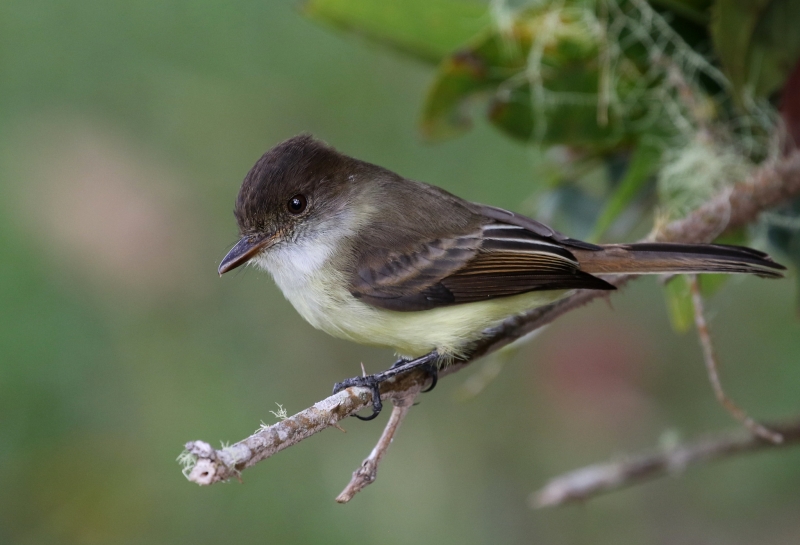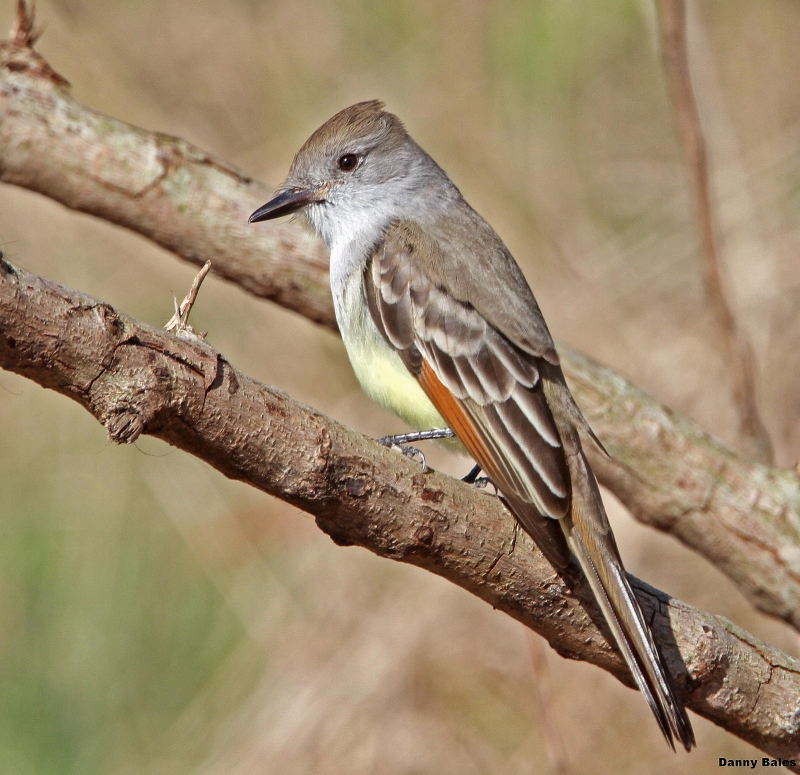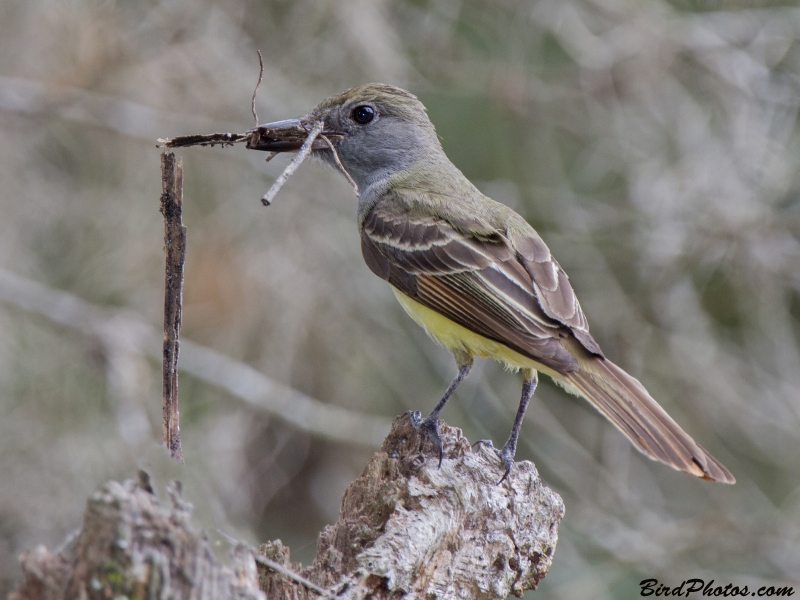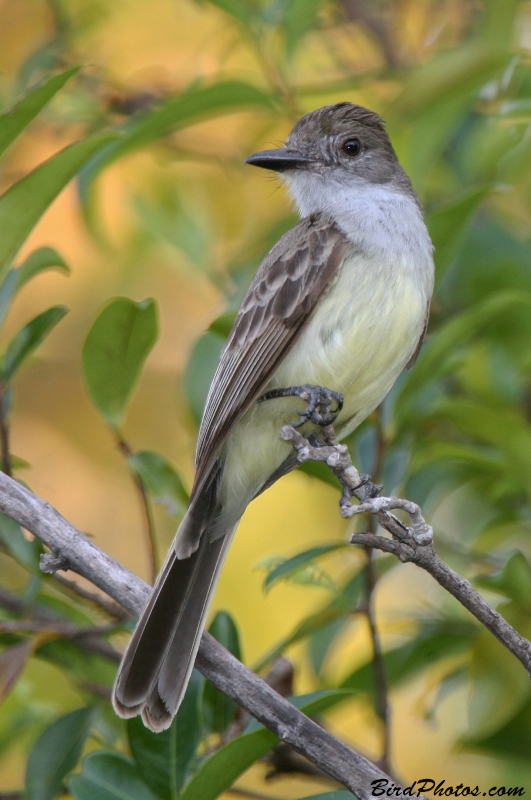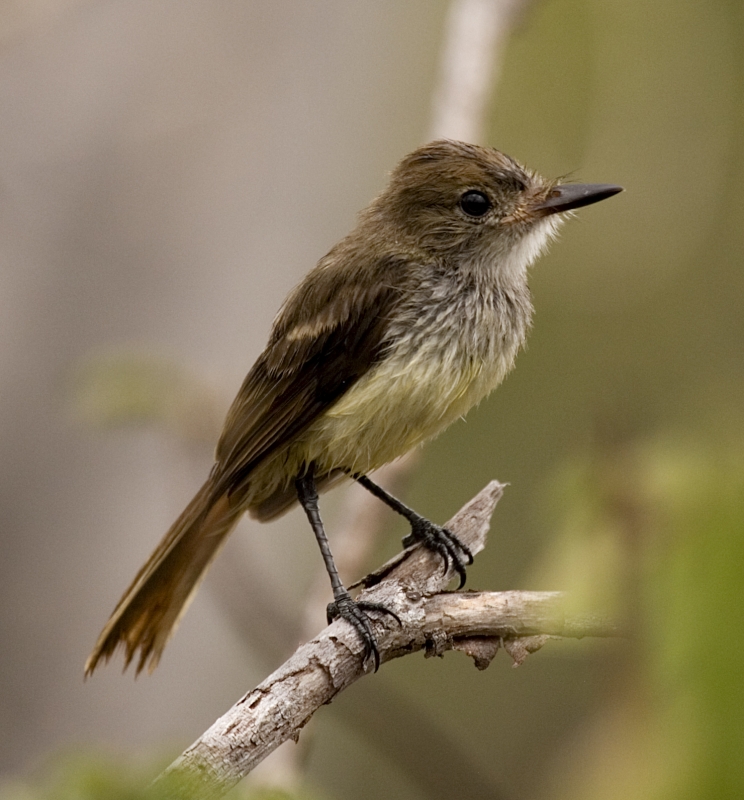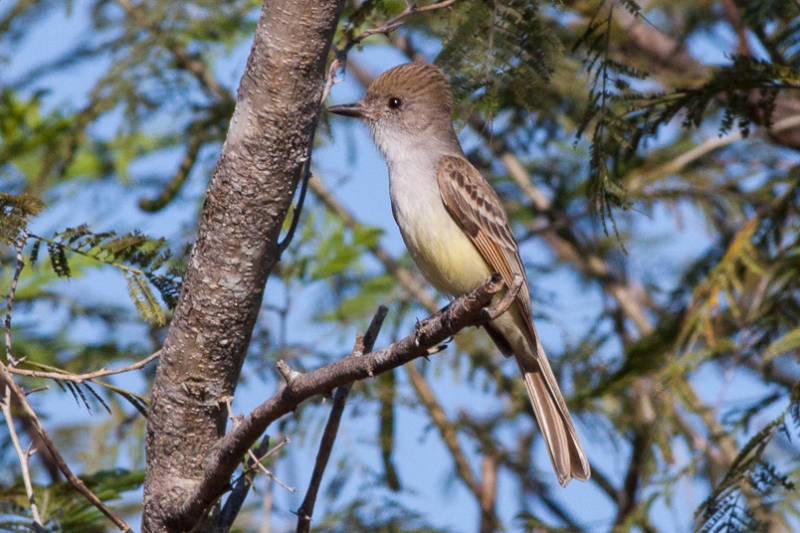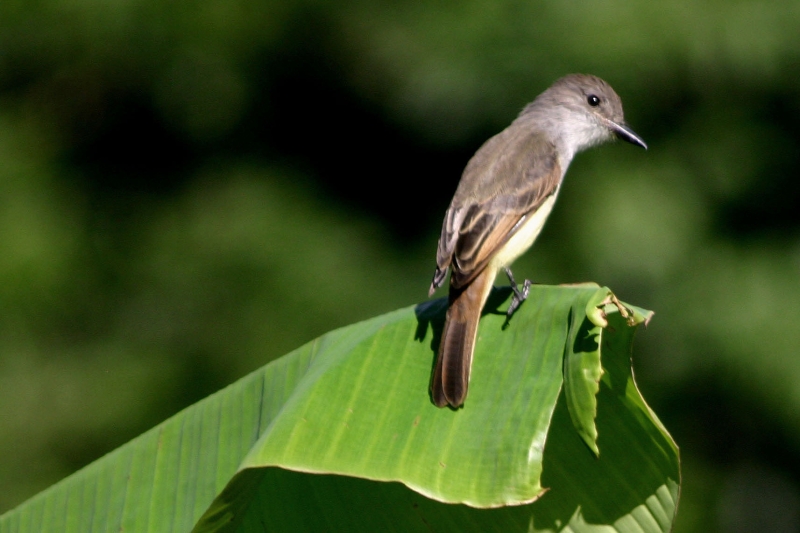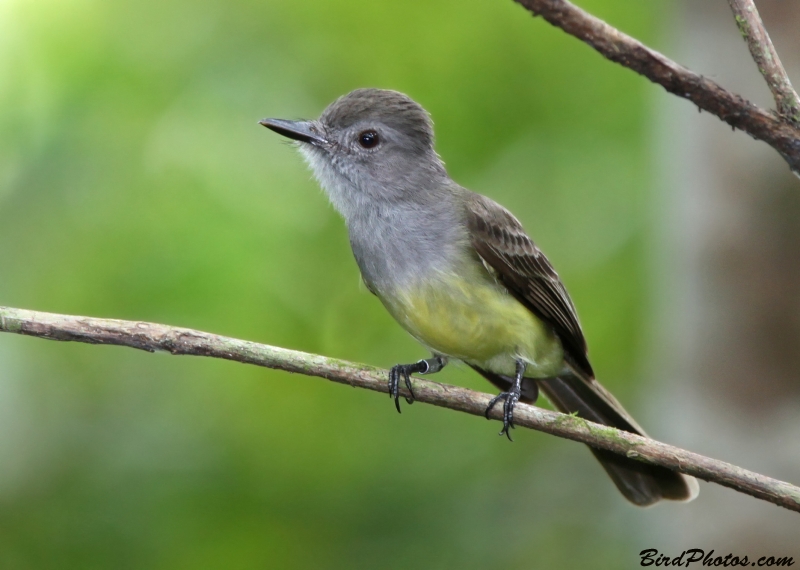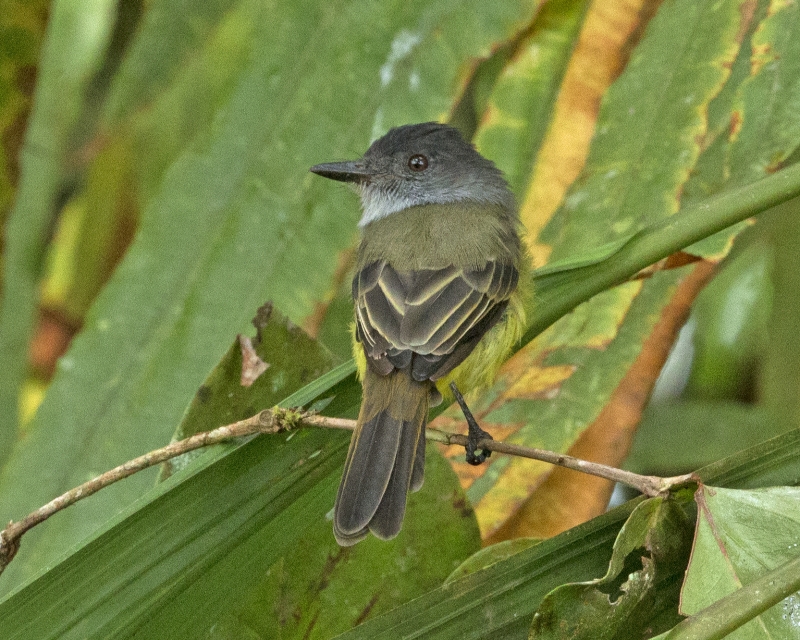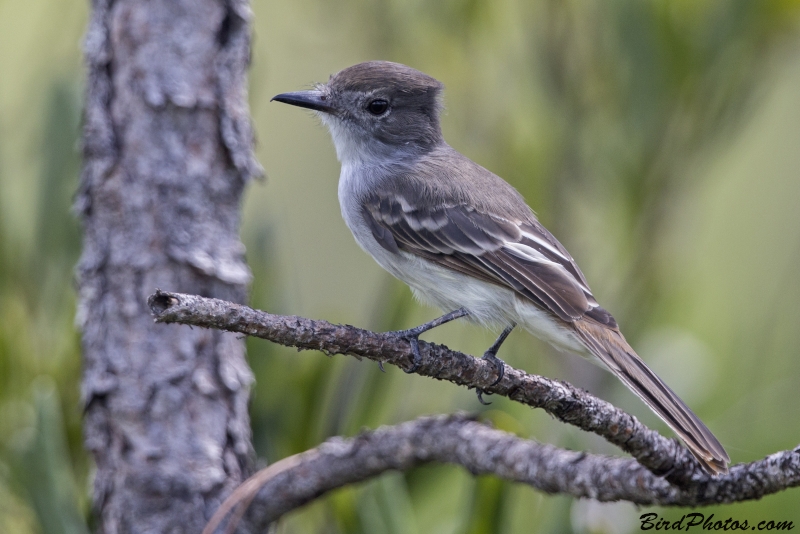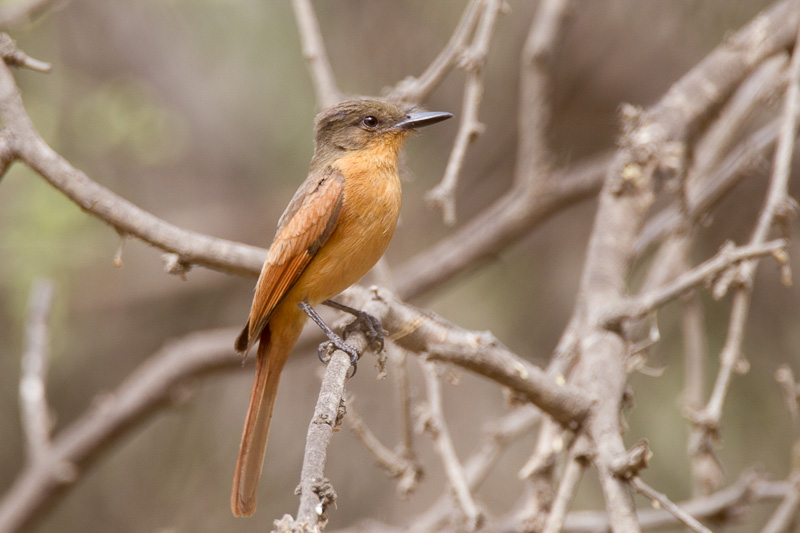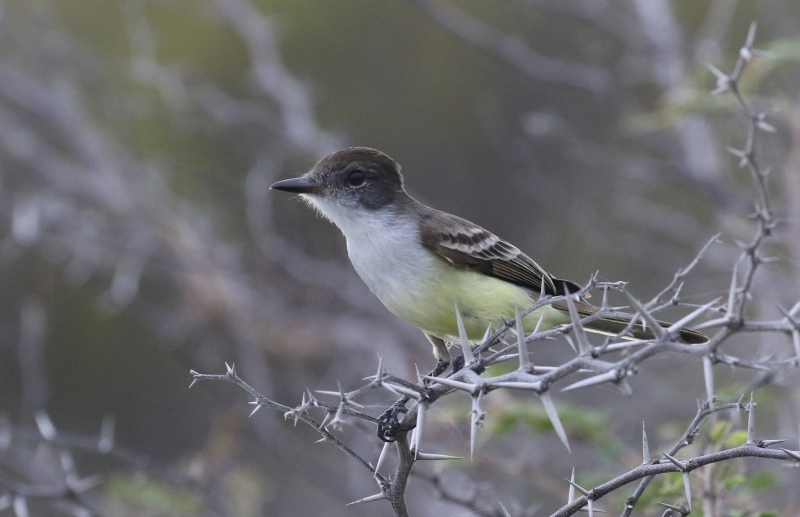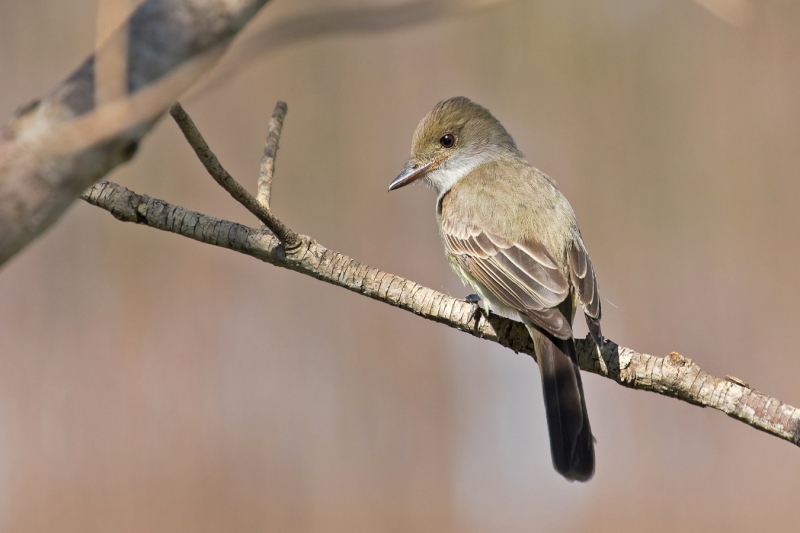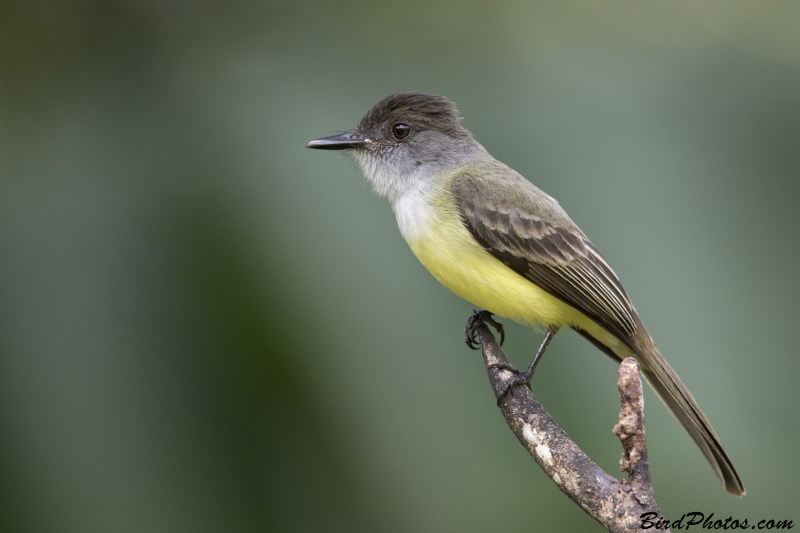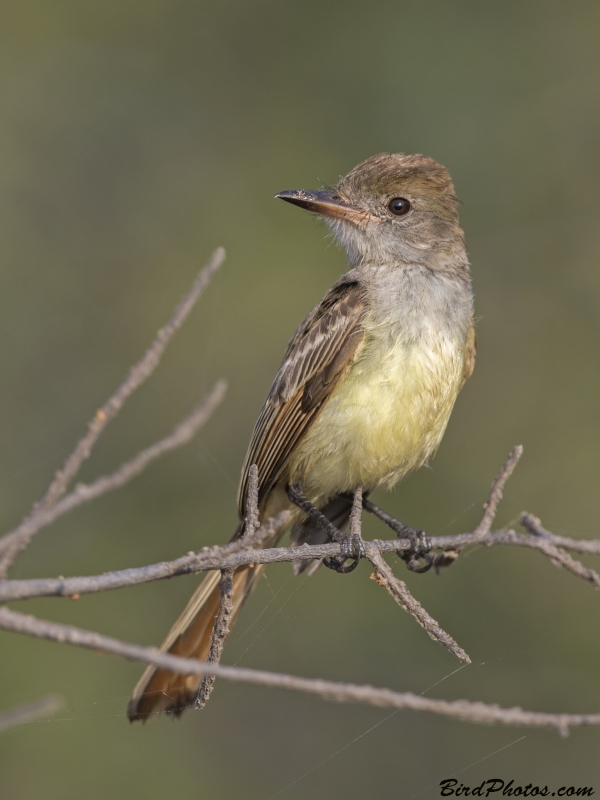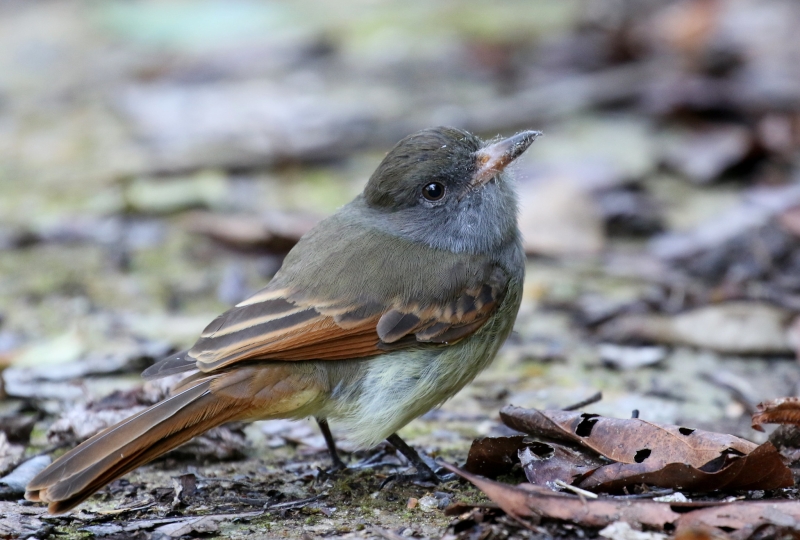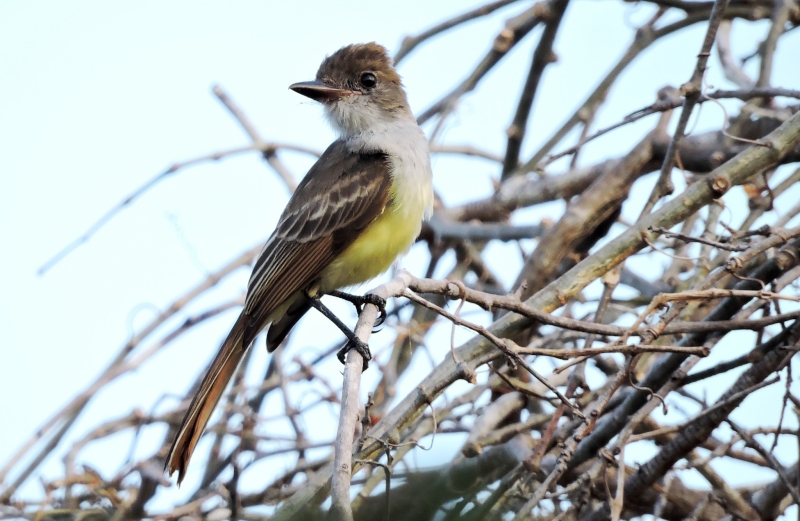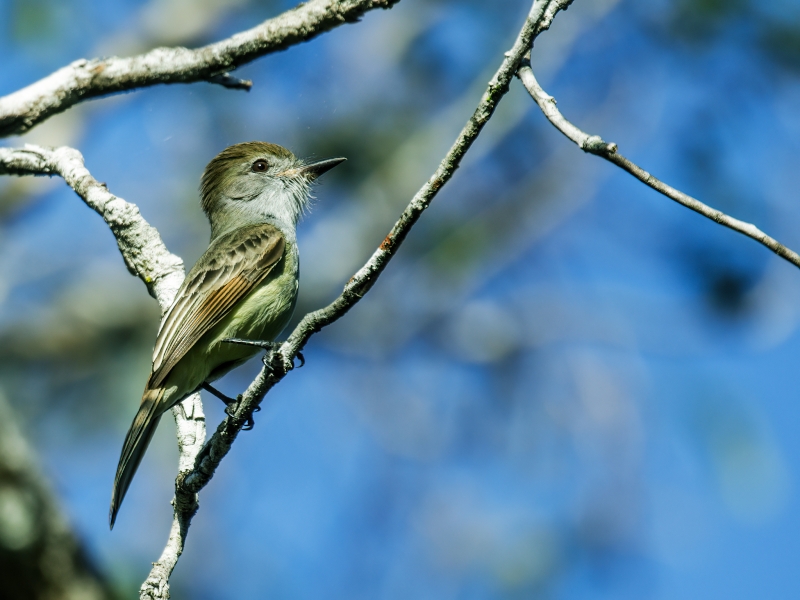| ||||||
Often in pairs. Found in Cauca and Magdalena lowlands, and generally the only genus myiarchus flycatcher in its range. Apical refers to the last common ancestor of an entire group, such as a species (biology) or a clan (anthropology) (Wikipedia). | ||||||
| ||||||
Generally found at higher altitudes (over 1200m and up to 3000m) than other similar myiarchus. | ||||||
| ||||||
Northern migrant. A tiny bit larger than other myiarchus flycatchers, with a usually lowered brown crest that contrasts the grey face. | ||||||||||||
Most common myiarchus in Amazon. | ||||||
| ||||||
| ||||
| ||||||
| ||||||
More greyish overall than other myiarchus. Seen more at forest edges and degraded forest than the forest-based Dusky-capped Flycatcher. | ||||||
Very similar to Dusky-capped Flycatcher. Look for a less distinct color change between crown and back. Normally lower than 1000m. | ||||||
| ||||||
| ||||||
| ||||||
Austral migrant. Very similar to the Short-crested Flycatcher. Note light base to lower mandible and pale front. | ||||||||||||
Dusky cap darker than others in genus. Widespread and sometimes common, in lowlands up to midranges (1500m) in the Andes. Note distinctive 'wheeew' call, and usually found inside the forest or at the edge. Individual with a slightly less dusky cap. | ||||||||||||
Note rufous tail. Large and vocal and more conspicuous than others in genus. | ||||||
| ||||||
Compared to Brown-crested Flycatcher, a bit smaller, crest less brown, and back of tail brown, not rufous. Often solitary, and much calmer than Brown-crested. | ||||||
| ||||||
